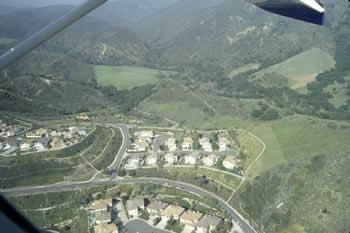The public learned of our positions on off highway vehicles (OHVs) in
Riverside County, a proposed mine south of Temecula, and on traffic
fees in San Diego County.

On March 7, 2005, the
Riverside Press-Enterprise
reported on a new state recreation area for OHVs in the rugged Badlands
area near Beaumont (“Plans rev up enthusiasm for new off-roading
park”). EHL Executive Director Dan Silver pointed out the problems
associated with OHVs and the potential value of a well-planned
facility: "This is part of a solution," Silver said by phone Friday.
"Currently, these off-road vehicles are doing untold damage to the
natural environment and wildlife." Explaining that the park would not
interfere with the multiple species plan or wildlife movement, Silver
was also quoted as saying, "The trade-off is [that] irresponsible
riding has to stop."
A proposed aggregate mine next door to the Santa Margarita Ecological Reserve (see Winter 2005
EHL Newsletter for details) south of Temecula received extensive press coverage. On March 6, 2005,
The Californian
(“Quarry faces minefield of opposition”) quoted Silver, who explained
that the site is key piece in the Riverside County Multiple Species
Habitat Conservation Plan, or MSHCP: "It is clearly the wrong place for
this project.” In an Mach 26, 2005 article titled, “A quarrel over
quarry,” the
San Diego Union-Tribune reported on deep concerns
over mountain lion and other impacts: “This seems like an almost
uniquely damaging place to propose . . . a mine," said Dan Silver,
executive director of the Endangered Habitats League, a Los
Angeles-based ecosystem protection group.
In recent months, EHL
has brought to the attention of the County of San Diego the need to
properly consider the additive, or “cumulative,” impacts of projects
under the California Environmental Quality Act. Comprehensive fees can
help solve this problem. Thus, as reported in the
San Diego Union-Tribune
of April 11, 2005 (“Board will address developer fees again”), “The
county's plan is not perfect but a step in the right direction," said
Dan Silver, executive director of the Endangered Habitats League.
"Having a fee like this is part of good planning," he said.


